when does text become art?

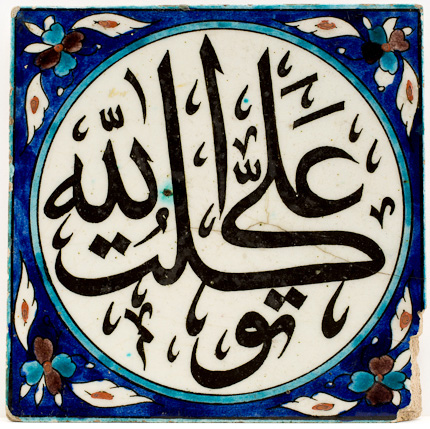 Tile with calligraphic inscription and floral decoration, 19th Century, before 1885, Turkish
Tile with calligraphic inscription and floral decoration, 19th Century, before 1885, Turkish More
Earthenware with underglaze polychrome decoration
Gift of Mrs. Alice Balch Abbott (Class of 1865)
Mount Holyoke College Art Museum, South Hadley, Massachusetts
Photograph Laura Shea
MH 1885.1.T.SII
Historically, calligraphy in the Islamic world was valued as much for its decorative purposes as for its textual use. Calligraphy was decoratively applied to vessels, tools, jewelry, and architecture.
Hide
 Zang Tumb Tumb , 1914
Zang Tumb Tumb , 1914 More
Book cover
Mortimer Rare Book Room, Smith College, Northampton, Massachusetts
Filippo Marinetti (1876-1944), founder of the futurist movement, was interested in speed, moving forward, and breaking from traditional practices. In his book, Zang Tumb Tumb, Marinetti sought to free literature from existing constraints using parole in libertà (words in freedom), in which creative typography is used to express visual ideas and physical sounds.
Hide
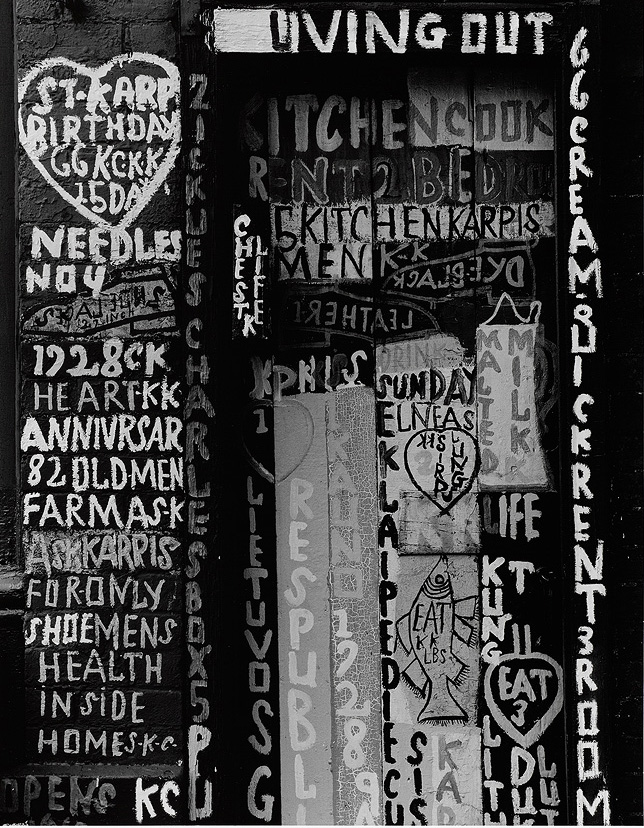 Chicago, Lithuanian Store 3 1957, Aaron Siskind
Chicago, Lithuanian Store 3 1957, Aaron Siskind More
Gelatin silver print
Sheet: 20 x 16 in.; image: 18 x 14 in.
Smith College Museum of Art, Northampton, Massachusetts
Gift of Lynn Hecht Schafran, class of 1962
SC 2003:43-3j
Hide
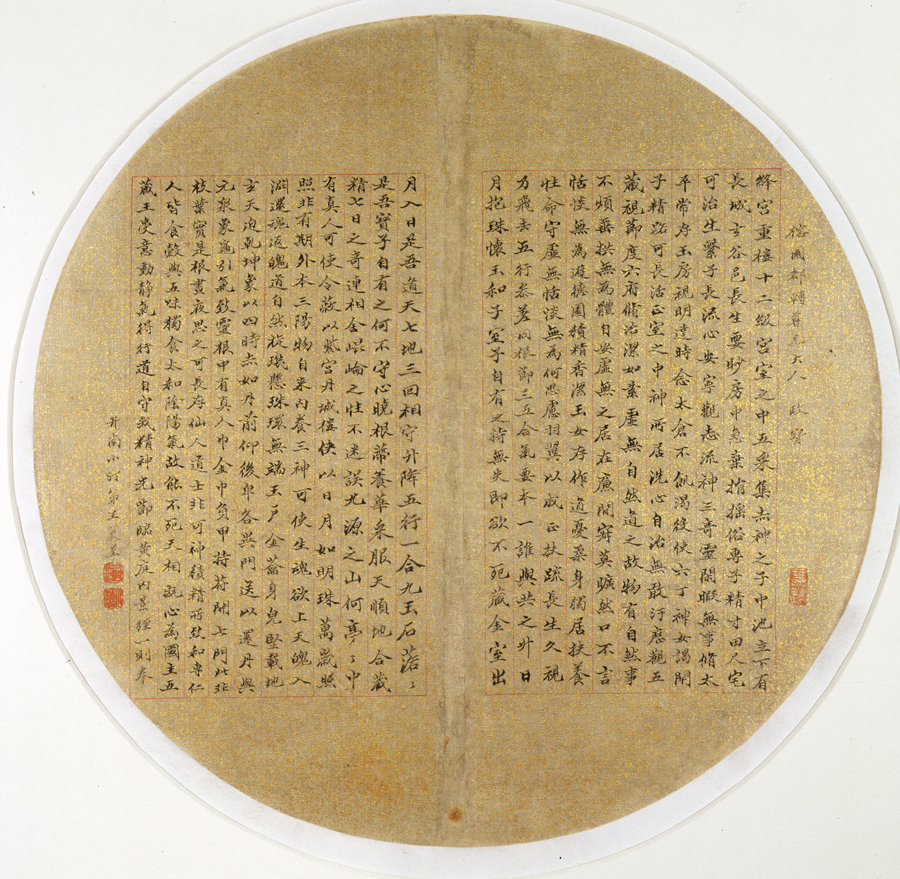 Chinese Calligraphy of Small Scripts, 1833, Wang Xiao
Chinese Calligraphy of Small Scripts, 1833, Wang XiaoMore
Black ink on silk mounted on white paper
Sheet: 26 1/2 x 13 3/8 in.; image: 11 in. diameter
Smith College Museum of Art, Northampton, Massachusetts
Gift of William S. T. Chang
SC 1947:12-8
In the scholarly discipline of Chinese calligraphy, characters are expected to be beautiful as well as legible. This exemplary text is written on gold-flecked paper and was intended to be made into a fan, hence the circular shape.
Hide
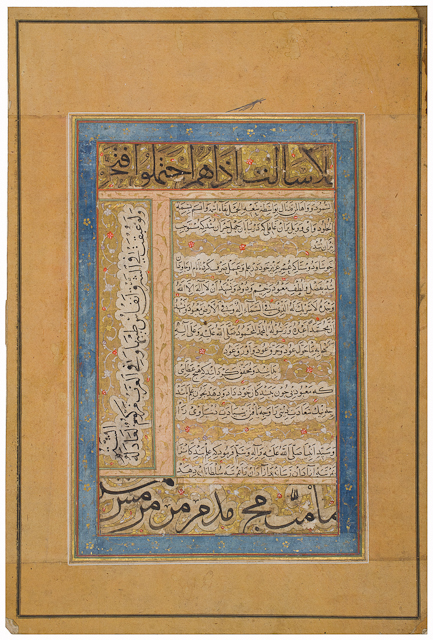 Calligraphy Page from the Koran, 18th Century
Calligraphy Page from the Koran, 18th CenturyMore
Islamic
Calligraphy page from the Koran
18th century
Bequest of Helene Brosseau Black (Class of 1931)
Mount Holyoke College Art Museum, South Hadley, Massachusetts
1991.4.13
Hide
 Chinese Poem, 1979
Chinese Poem, 1979 More
Woodblock print
Sheet: 10 3/4 in x 9 7/16 in.; plate: 9 7/8 in x 8 1/2 in.
Mead Art Museum at Amherst College
Gift of Doris Lee and John H. Rich, Jr.
AC 2010.48
A 20th century image of Japan’s vibrant history of woodblock printmaking, this work by Maki Haku (1924-2000) broke from the pictorial tradition of other woodblock artists and instead pursued a more abstract style. In this print, the abstract aesthetic values of traditional calligraphy are taken to an extreme degree, resulting in bold shapes that are beyond textual meaning entirely.
Hide
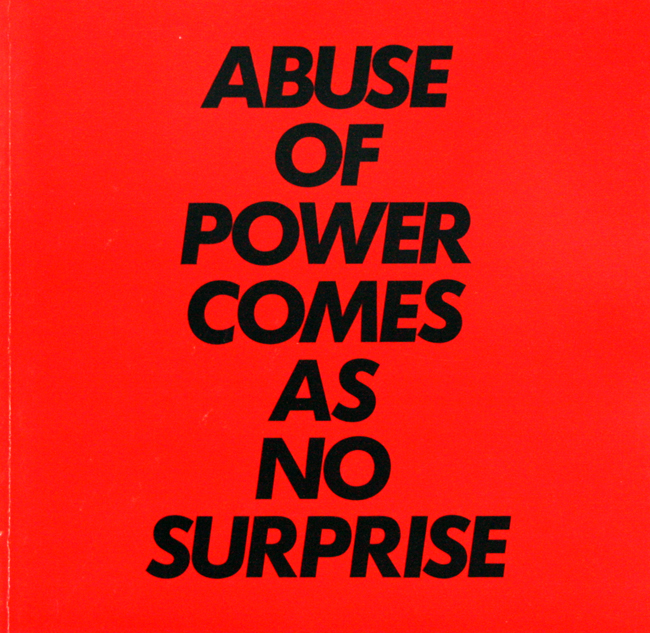 Abuse of Power Comes As No Surprise: Truisms and Essays, 1983, Jenny Holzer
Abuse of Power Comes As No Surprise: Truisms and Essays, 1983, Jenny HolzerMore
Softcover artist's book
8 in. x 8 in.
University Museum of Contemporary Art, University of Massachusetts Amherst
From the exhibition Artist / Author, American Federation of the Arts
UM 1999.5.14
Jenny Holzer (b. 1950) is known for her use of simple text to express suppressed ideas she feels deserve to be uncovered for public recognition. On a smaller scale, her artist book achieves a similar goal and illuminates themes such as violence, oppression, sexuality, power and war.
Hide